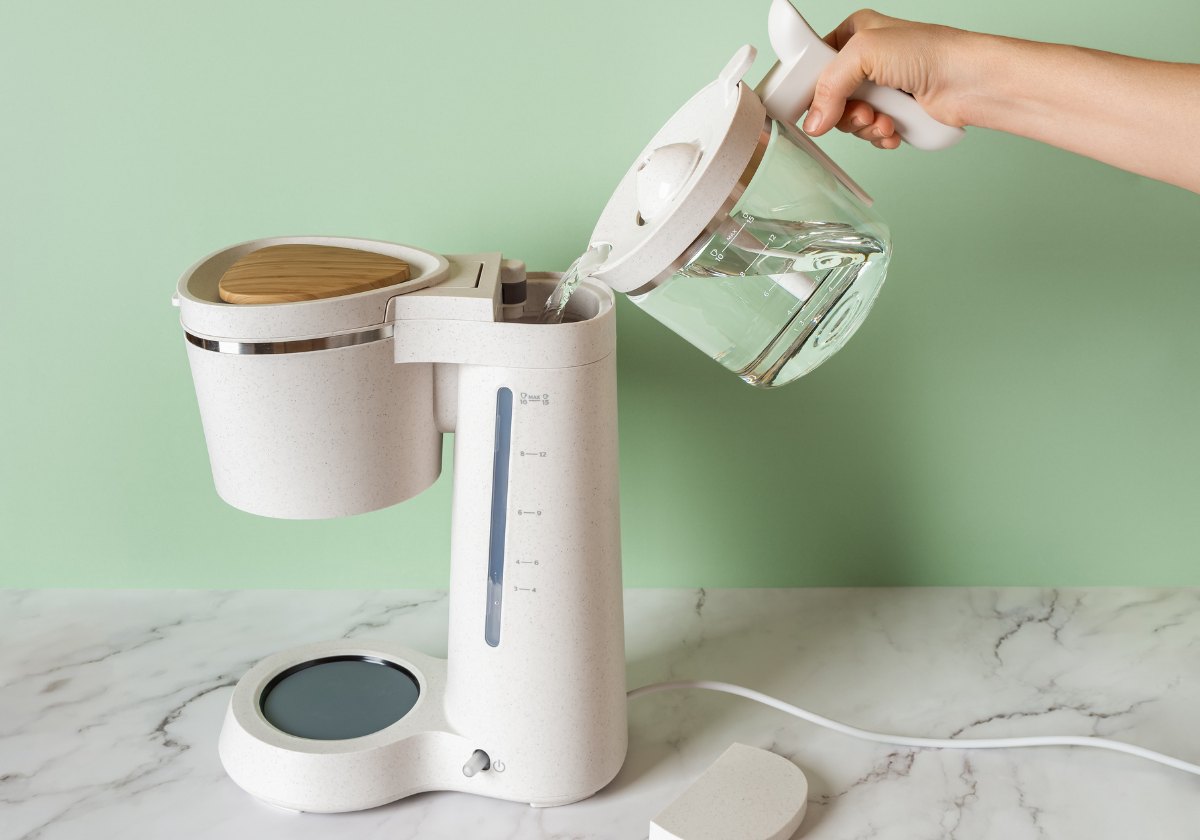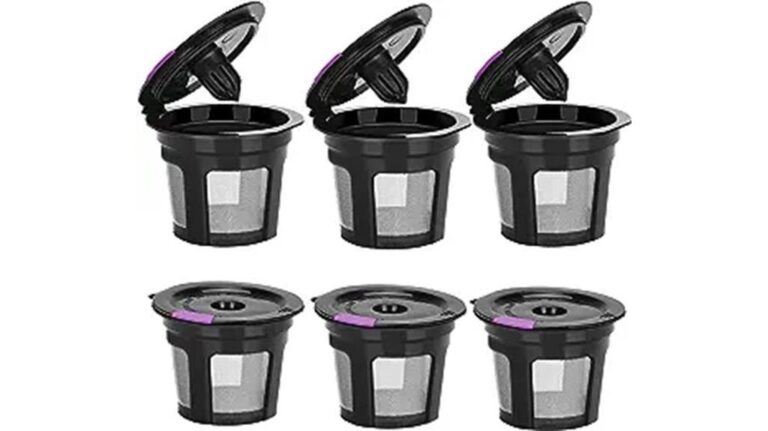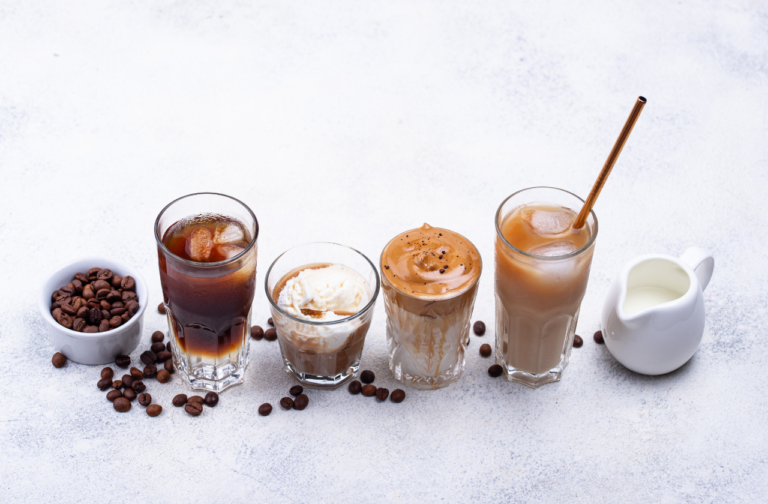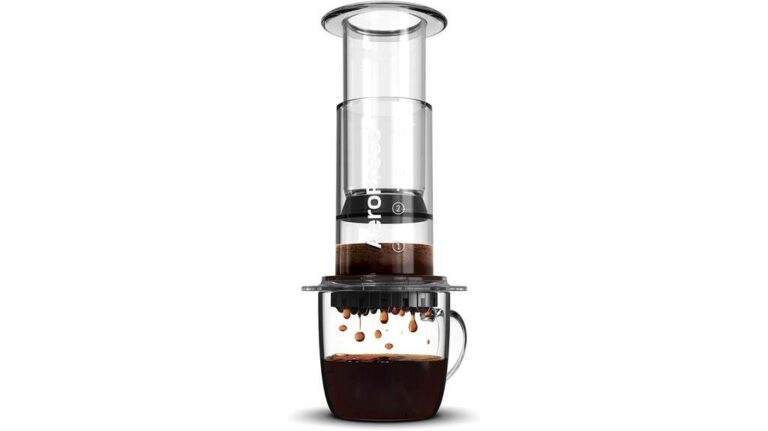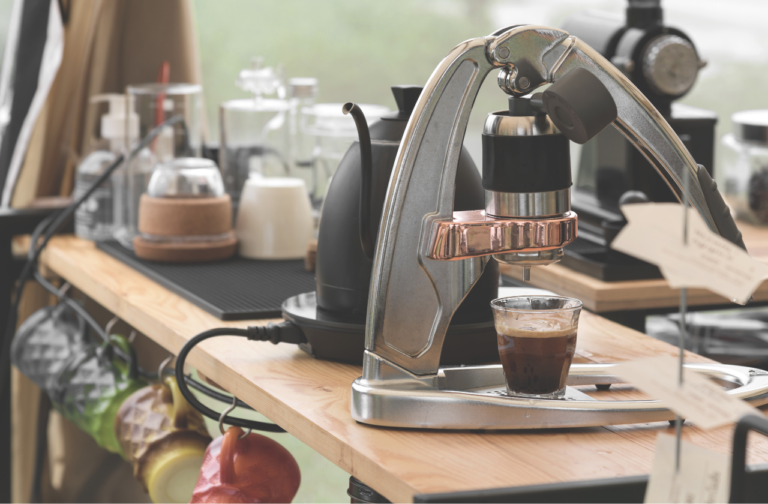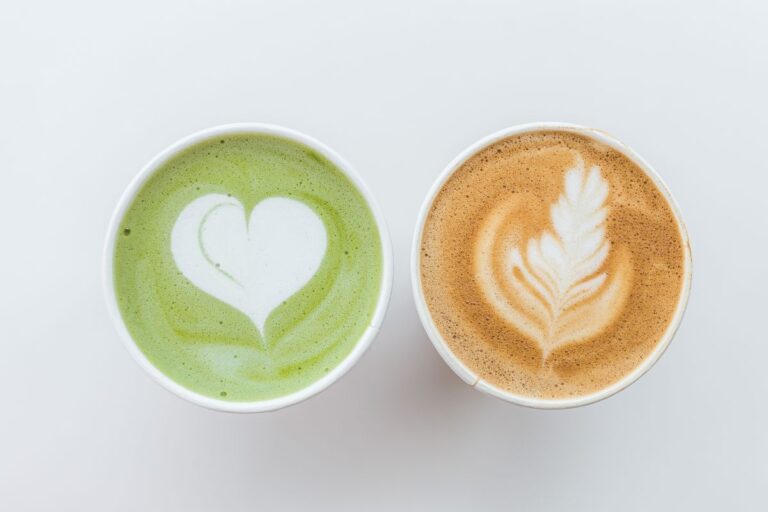Boost Your Drip Coffee Flavor: A How-to Guide
Drip coffee brewing can be challenging, and it can feel frustrating when your brew is not as good as you know it can be. Drip coffee brewing requires honed techniques to perfect, but if you follow a few simple steps, you can boost your drip coffee flavor significantly. Selecting high-quality coffee beans, mastering the grind, water temperature, and brew time, are among the most critical aspects of drip coffee brewing to conquer.
To brew good drip coffee, choose good coffee beans, ground medium-fine. Brew with a 1:15 coffee-water ratio by weight, with good quality water. Optimize brew time and extraction for a balanced flavor profile, and experiment with different roast levels to find your ideal brew.
Sometimes, all you need to make the perfect drip coffee brew is a little guidance. Coffee brewing is complex in many ways, but a good drip brewing method removes the difficulty from it and allows you to focus on the aspects of the process that really matter.
Choosing the Right Coffee Beans For Drip Coffee Flavor

When choosing the right coffee beans for your drip coffee, it is crucial to consider their origin, roast level, and flavor profile. Selecting the right roast is a key factor in determining the taste of your coffee. The roast level refers to the degree of roasting the beans undergo, which affects their flavor and aroma.
Light roasts tend to have a more delicate and nuanced flavor, often highlighting the specific characteristics of the coffee’s origin. Medium roasts strike a balance between flavor and acidity, offering a pleasant and well-rounded taste. Dark roasts are known for their bold and intense flavors, with caramelized sugars and a rich, smoky aroma.
Understanding coffee origins is another essential aspect of choosing the right beans. Different regions around the world produce coffee with distinct flavors and profiles. For example, beans from Ethiopia often exhibit fruity and floral notes, while Colombian coffee is known for its mild acidity and balanced flavor. Brazilian beans are typically nutty and chocolatey, and Indonesian coffee tends to have earthy and spicy undertones.
Grinding the Beans to Perfection
Grinding your coffee beans to the perfect size is crucial for achieving optimal flavor in your drip coffee. The grind size determines the rate of extraction, with finer grinds allowing for more flavor extraction and coarser grinds resulting in a milder taste.
Regarding the best riders for drip brewing, burr grinders are preferred over blade grinders as they provide a more consistent grind size, which is essential for even extraction.
Grind Size Importance
To enhance the flavor of your drip coffee, it is crucial to carefully grind the beans to achieve the perfect size consistently. The grind size consistency plays a significant role in the coffee extraction process, impacting the overall taste and quality of your brew.
Here are five key points to consider when it comes to grind size:
- Extraction rate: The size of the coffee grounds determines how quickly the flavors and aromas are extracted during brewing.
- Brewing method: Different brewing methods require specific grind sizes to optimize extraction and achieve the desired flavor profile.
- Over-extraction and under-extraction: Inconsistent grind size can lead to over-extraction, resulting in a bitter taste, or under-extraction, leading to a weak and sour flavor.
- Surface area: Smaller grind size increases the surface area of the coffee particles, allowing for better extraction of flavors.
- Consistency: Consistently grinding the beans to the same size ensures even extraction, resulting in a balanced and flavorful cup of coffee.
Burr Vs Blade Grinders
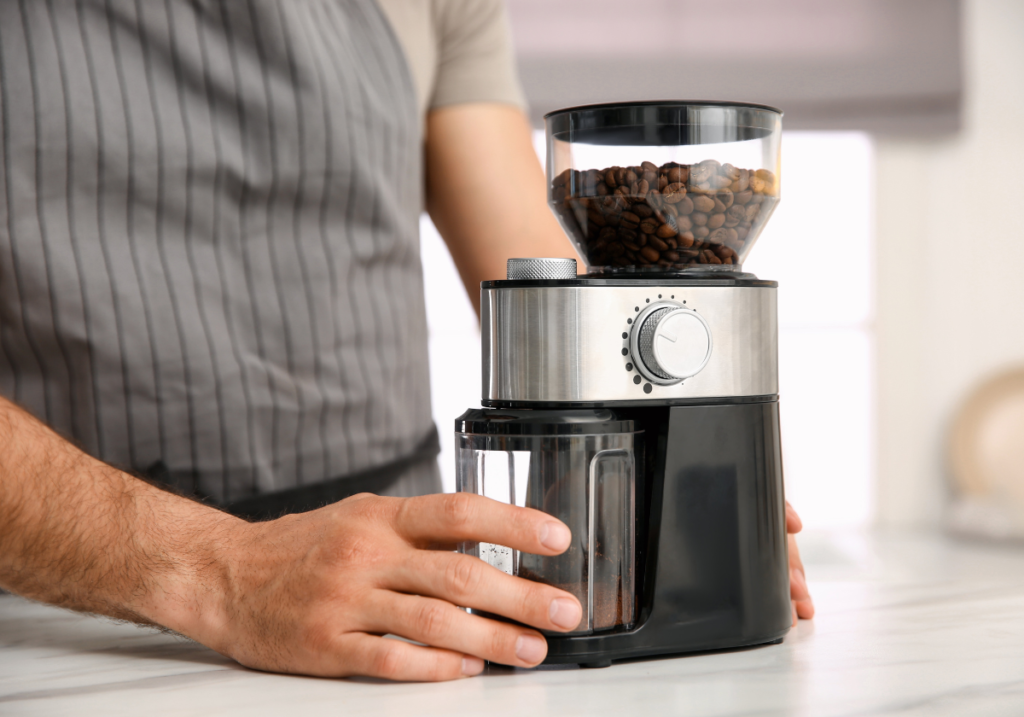
The choice between burr and blade grinders is a crucial factor in achieving the perfect grind size for your drip coffee. Burr grinders are known for their consistency and precision in grinding coffee beans.
They use two abrasive surfaces, one stationary and the other rotating, to crush the beans to a uniform size. This allows for better extraction during brewing, resulting in a more flavorful and balanced cup of coffee.
On the other hand, blade grinders use a spinning blade to chop the beans, resulting in an inconsistent grind size. While blade grinders are generally more affordable, they tend to produce uneven particles, leading to over-extraction and bitterness in the final cup.
Additionally, when considering manual vs electric grinders, manual burr grinders offer more control over the grind size, but electric grinders are more convenient and time-saving.
Ultimately, the choice between burr and blade grinders depends on your preference for consistency, control, and convenience.
Adjusting for Extraction
Achieving the perfect extraction for your drip coffee involves fine-tuning the grind size. The grind size directly affects the surface area of the coffee particles, which in turn affects the rate of extraction. To adjust for extraction, consider the following:
- Experiment with different grind sizes: Coarser grinds result in faster extraction, while finer grinds lead to slower extraction.
- Adjust extraction time: If your coffee tastes weak, try extending the brewing time. Conversely, if it tastes bitter or over-extracted, reduce the brewing time.
- Explore brewing methods: Each brewing method has its own ideal grind size and extraction time. Experiment with different methods, such as pour-over, French press, or AeroPress, to find your preferred flavor profile.
- Use a quality burr grinder: A burr grinder offers greater control over grind size consistency, resulting in more precise extraction.
- Keep track of variables: Record the grind size, brewing method, extraction time, and any adjustments made. This will help you replicate your desired flavor consistently.
Water Temperature and Quality Matters

One crucial factor in optimizing the flavor of your drip coffee is the precise water temperature and quality. Water temperature control plays a significant role in the extraction process, as it affects the rate at which the coffee dissolves and releases its flavors.
For optimal results, the water temperature should be between 195°F and 205°F (90°C – 96°C). This range allows for proper extraction without scorching the coffee grounds or under-extracting the flavors.
In addition to temperature, water quality is equally important in enhancing the taste of your drip coffee. The quality of water used can greatly impact the overall flavor profile.
Tap water often contains impurities like chlorine, minerals, and sediments, which can alter the taste of your coffee. It is recommended to use filtered or bottled water to ensure a clean and pure taste.
The presence of minerals in the water also affects the brewing process. Hard water, which contains a high concentration of minerals like calcium and magnesium, can result in a more robust and bitter flavor.
Soft water with a lower mineral content may produce a flat and dull taste. Striking the right balance is important to achieve a well-rounded and flavorful cup of coffee.
To ensure the best water quality, regular cleaning and maintenance of your coffee brewing equipment are necessary. Cleaning removes any buildup of minerals or residue that may affect the taste of your coffee. It is also essential to descale your coffee machine periodically to prevent the accumulation of mineral deposits.
Mastering the Coffee-to-Water Ratio

Mastering the coffee-to-water ratio is essential for achieving the perfect cup of drip coffee. The right proportions can enhance coffee extraction, resulting in a more flavorful and balanced brew.
Finding the ideal balance between strength and taste is key to unlocking the full potential of your coffee beans.
Perfect Brewing Proportions
To achieve the perfect brewing proportions for drip coffee flavor, it is essential to understand the ideal coffee-to-water ratio. This ratio determines the strength and taste of your coffee, so getting it right is crucial for a satisfying cup. Here are five key points to consider when mastering the coffee-to-water ratio:
- Start with a ratio of 1:15, which means one part coffee to fifteen parts water. Adjust this ratio based on your personal preference for strength.
- Use a kitchen scale to measure the amount of coffee and water accurately. This ensures consistency in your brewing process.
- Experiment with different brewing techniques to see how they affect the flavor profile of your coffee. For example, a longer extraction time can result in a bolder taste.
- Take note of the origin and roast level of your coffee beans. Different beans have different flavor profiles, so adjust your ratio accordingly.
- Pay attention to water quality. Filtered water is recommended to avoid any unwanted flavors.
Enhancing Coffee Extraction
To optimize the extraction of coffee flavor, it is essential to refine the coffee-to-water ratio. Maximizing coffee flavor requires understanding the science behind coffee extraction techniques.
The coffee-to-water ratio refers to the proportion of coffee grounds to water used in the brewing process. A higher ratio will result in a stronger and more flavorful coffee, while a lower ratio will yield a milder taste. Finding the perfect balance is crucial for achieving the desired flavor profile.
To determine the ideal coffee-to-water ratio, start by experimenting with different ratios and observing the taste and strength of the coffee.
As a general guideline, a ratio of 1:15 (1 part coffee to 15 parts water) is commonly recommended. However, personal preferences may vary, and it is important to adjust the ratio according to individual taste preferences.
Balancing Strength and Taste
Achieving the optimal balance between strength and taste in drip coffee requires a precise mastery of the coffee-to-water ratio. This ratio determines the amount of coffee grounds to use for a given amount of water, and it greatly influences the final flavor profile of the brew.
Here are five key considerations to keep in mind when balancing coffee strength and flavor:
- Start with a baseline ratio: Begin with a standard ratio of 1:15, using 1 part coffee to 15 parts water.
- Adjust to taste: Experiment with different ratios to find the perfect balance for your palate.
- Consider the roast level: Darker roasts generally require a slightly higher coffee-to-water ratio to bring out their full flavor.
- Take water quality into account: Using filtered water can enhance the taste of your coffee and allow you to maintain the desired strength.
- Measure accurately: Use a scale to ensure precise measurements of both coffee and water for consistent results.
Optimizing Brew Time and Extraction
The key to maximizing the flavor of your drip coffee lies in optimizing brew time and extraction. Brewing techniques play a crucial role in achieving the perfect cup of coffee.
A critical step in this process is the coffee bloom. When hot water is poured over coffee grounds, it release carbon dioxide, creating a blooming effect. This initial bloom is a sign of freshness and indicates that the grounds are releasing their flavors. To ensure a proper bloom, use fresh coffee beans and grind them just before brewing.
The size of the coffee grounds also affects the extraction process. Finer grounds result in a stronger, more intense flavor, while coarser grounds produce a milder taste.
The brew time is equally important. Too short of a brew time will result in under-extraction, leading to a weak and flavorless cup of coffee. On the other hand, too long of a brew time can lead to over-extraction, resulting in a bitter and unpleasant taste. Finding the right balance is key.
Enhancing Flavor With Proper Storage
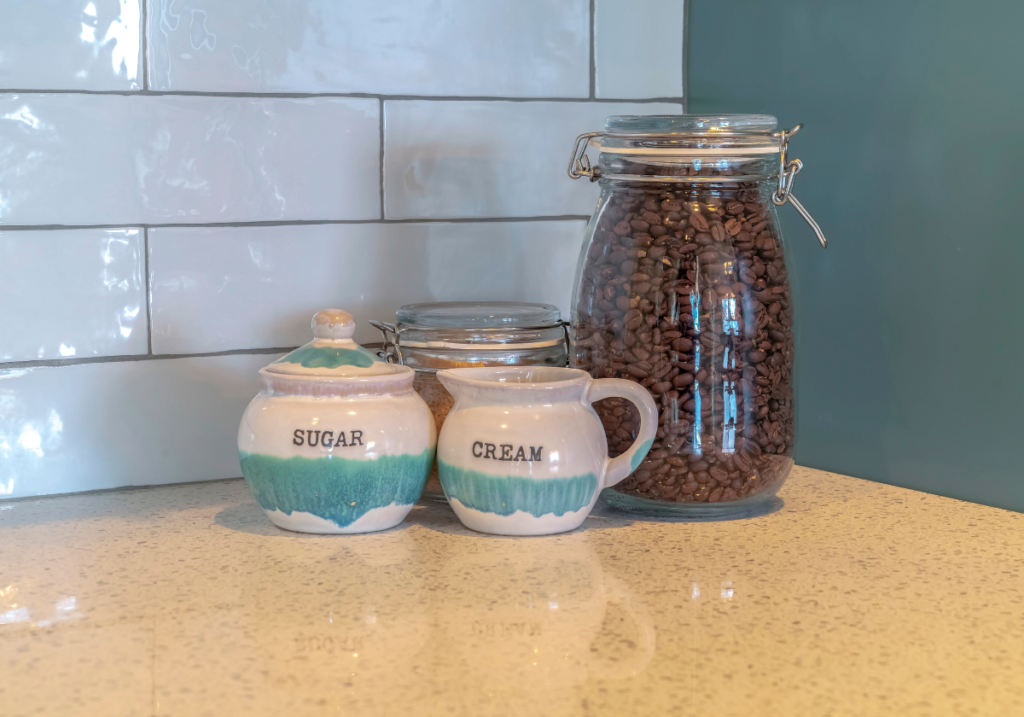
Proper storage plays a crucial role in enhancing the flavor of your drip coffee by preserving freshness and preventing the degradation of taste. When it comes to preserving coffee freshness, there are several techniques you can employ:
- Use an airtight container: Oxygen is one of the key factors that can lead to the loss of flavor in coffee. By storing your coffee in an airtight container, you can minimize its exposure to oxygen and prolong its freshness.
- Keep it away from light: Light can also have a negative impact on the flavor of coffee. To prevent flavor deterioration, store your coffee in a dark, cool place, away from direct sunlight.
- Avoid moisture: Moisture is another enemy of coffee freshness. Make sure to keep your coffee away from humid environments, as moisture can cause it to become stale and lose its flavor.
- Grind just before brewing: Grinding coffee beans exposes more surface area to air, leading to faster flavor deterioration. To preserve freshness, it is best to grind your coffee just before brewing.
- Don’t store in the refrigerator: While it may seem like a good idea to store coffee in the refrigerator, it can actually lead to moisture absorption and flavor loss. It is best to store coffee at room temperature.
Conclusion
In conclusion, by following the steps outlined in this guide, you can greatly enhance the flavor of your drip coffee.
Start by choosing the right coffee beans and grinding them to perfection. Pay attention to water temperature and quality, as well as the coffee-to-water ratio. Optimize brew time and extraction for a balanced flavor profile. Store your coffee properly to preserve its freshness and maximize flavor. With these tips, you’ll be able to enjoy a delicious cup of drip coffee every time.
